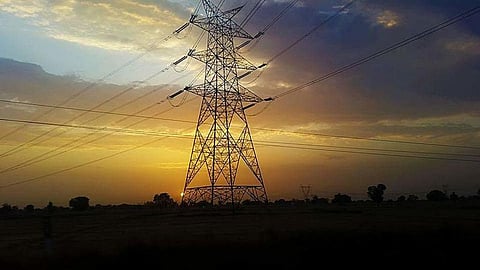It is time to move on to next phase of power reforms
The Electricity Act 2003 (the Act) was notified by the Government of India in June 2003, over 18 years ago. The power industry has made great strides since then: The country has established self-sufficiency in fulfilling consumers’ electrical demands, implemented ground-breaking regulatory reforms and has empowered consumers.
It is true to say that the Act was the beginning of reforms in the sector. It paved the way for a long series of other reforms that followed. Our per capita power consumption has increased almost 2.3 times since 2003.
The country’s installed capacity has increased to 388 gigawatt. Renewable energy capacity (solar, wind and other renewables, excluding hydropower) surpassed 102 GW.
However, a policy can only remain effective over a longer period of time if it is continually adapted to the changing needs and desires of consumers in all sectors of economy, including electricity.
We are in the process of leapfrogging to the next stage of growth in the electricity sector. Innovative technological solutions will play a larger role in the future. Batteries, other creative storage technologies, electric vehicles and distributed supply are all likely to cause big structural changes.
Statutes and rules must be written in ways that they serve as facilitators and provide an enabling environment for the adoption of new technologies.
With people’s increasing reliance on electricity in many aspects of life, the need for a continuous, round-the-clock supply of energy in homes, businesses and industries is set to rise. We are entering an era wherein electricity will be viewed as a service and customers will not hesitate to demand service, even if it is expensive.
The strain on electrical distribution will simultaneously grow. This necessitates the demolition of the present building and the implementation of a new framework.
The 2003 Act allowed for the delicensing of generation and transmission, which resulted in capacity additions of 50,000 MW and 88,000 MW during the 11th and 12th plan periods, respectively, up from 20,950 MW in the 10th Plan.
This has enabled the Union government to fulfil the country’s ever-increasing peak demand and energy demand.
The distribution sector, on the other hand, continues to be a stumbling block in the value chain. The new planned set of changes — which would allow delicensing of the distribution sector with content (electricity) and carriage (wire) separation — is urgently needed to enhance the industry’s efficiency, consumer service, and aggregate technical and commercial losses.
The impact of these losses also affects the coal industry. The recent power crisis was ascribed to a coal shortage, even as the country has a surplus producing capacity. This stresses on the necessity for such reforms.
Apart from the impact of the novel coronavirus disease (COVID-19) and the prolonged monsoon, the unpaid dues of Rs 23,000 crore owed to coal firms by GENCOs (generating companies) also contributed to the current coal crisis. This has been because distribution companies (DISCOMs) haven’t been paying GENCOs on time. The debt owed by DISCOM to electricity producers is Rs 116,127 crore.
With such a large mandate, the central government is in a great position to implement ambitious changes that may propel the industry forward.
The Union Ministry of Power recently notified the rules under Electricity Act, 2003 in the interest of electricity consumers and other stakeholders. These include Electricity (Timely recovery of costs due to change in law) Rules, 2021, and rules on promotion of renewable energy generation by dealing with Must-Run matters and other matters, 2021.
The Union government has implemented several changes in recent years, notably in the distribution sector. It is now necessary to move on with its promulgation and implementation. The Union Budget for the financial year 2021-22 stated that customers of energy should have a choice.
Government or corporate monopolies run the distribution firms across the country. Competition must be encouraged to give customers a variety of options.
A framework will be put in place to allow customers the option of choosing from multiple distribution companies. There is also a proposal to allocate Rs 305,984 crore over five years for a revamped, reforms-based and result-linked power distribution scheme.
Several amendments have been proposed by the government, including reforming the licensing system, revamping the regulatory system and improving the financial health of power distribution companies.
The tariff policy was also amended to improve payment security for power supplies, and to reduce losses and cross-subsidies. The Union government has made it clear that reforms will be pushed through. It is time to take action on that intention.
Unlike the economic liberalisation of the 1990s, the proposed reforms have the potential to have profound effects on the power sector. Reforms initiated under the Act of 2003 may be difficult to carry forward. It is time for the Union government to plan for the next phase.


.jpeg)